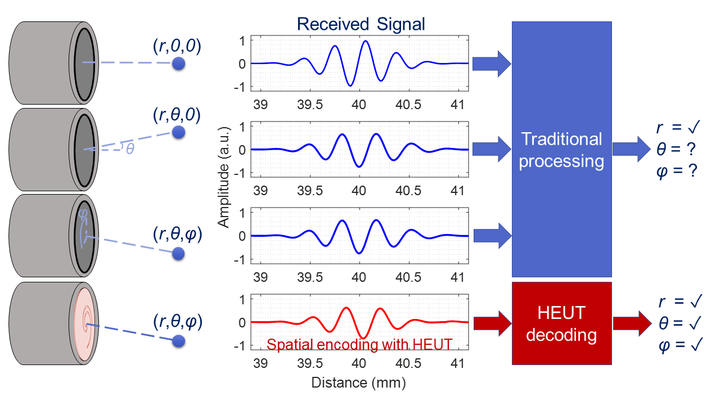A human ear-inspired ultrasonic transducer (HEUT) for 3D localization of sub-wavelength scatterers

Abstract
The proposed technology aims to enable 3-D localization of scatterers using single-element ultrasonic transducers, which are traditionally limited to 1-D measurements. This is achieved by designing a bespoke acoustic lens with a spiral-shaped pattern similar to the human outer ear, a shape that has evolved for sound source localization. This lens breaks the surface symmetry of the transducer, allowing ultrasonic waves arriving from different directions to be encoded in a certain way that can later be decoded to extract directional information. By employing the mechanism of spatial-encoding of the received signals and decoding via signal processing, the location of sub-wavelength scatterers can be detected in 3-D with a single measurement for sparsely distributed scatterers. The proposed technology is first verified through a simulation study, and then 3-D printed acoustic lenses are used to demonstrate the 3-D encoding functionality of the Human Ear-inspired Ultrasonic Transducer (HEUT) experimentally. A framework is created to localize scatterers in 3-D by processing received signals acquired by a HEUT prototype. With this technology, a single transducer can obtain multi-dimensional information with a single pulse-echo measurement, reducing the number of elements required for performing 3-D ultrasound localization. The proposed spatial-encoding and –decoding technology can be applied to other wave-based imaging methods to develop affordable, practical and compact sensing devices.